Comfrey is known for its ability to heal broken bones and repair skin tissue. Learn how to dehydrate comfrey root to use in salves to promote healing.
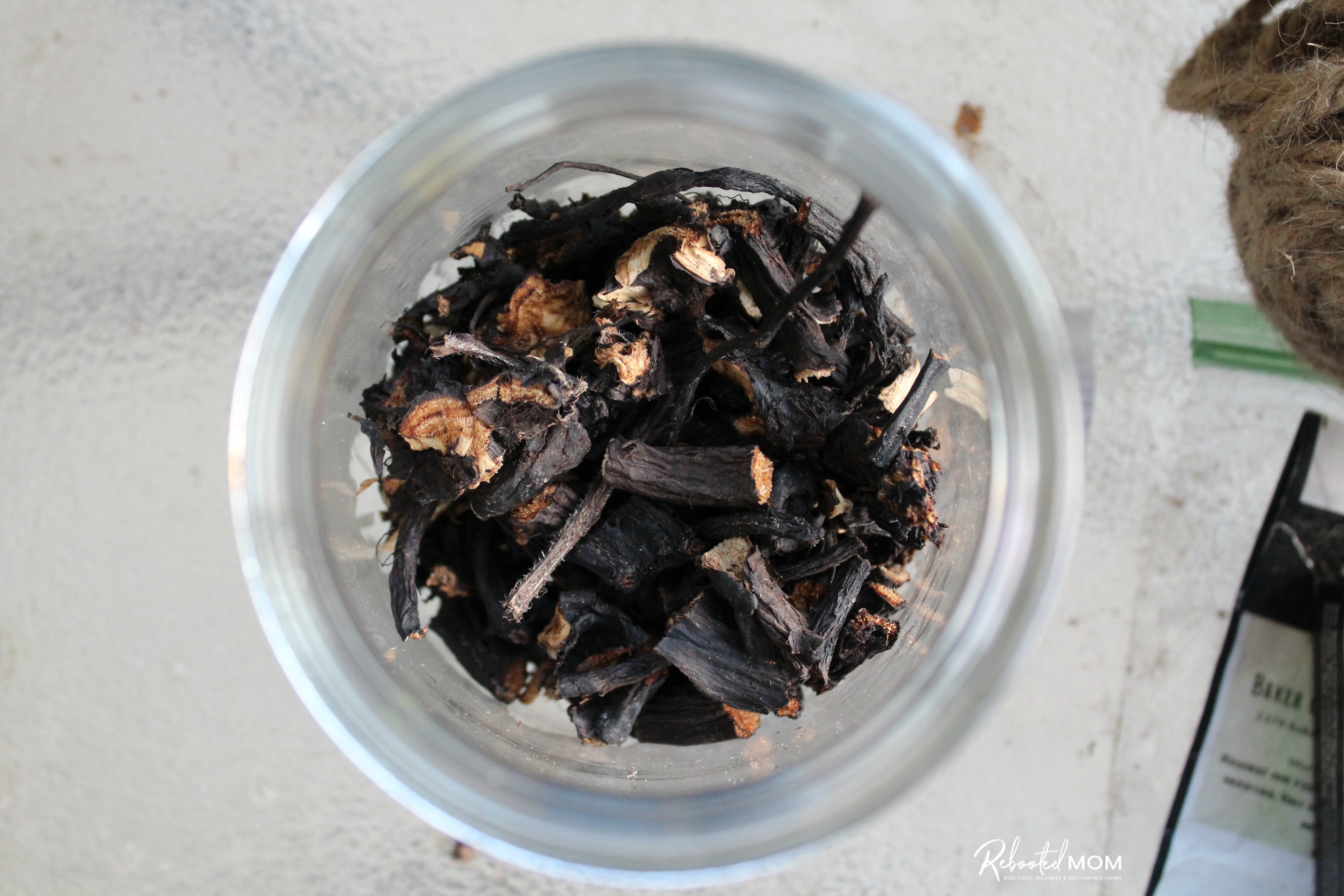
Comfrey is one of my favorite plants to grow in the garden. Not only does it thrive even in the poorest of soil conditions, it is known for its ability to heal broken bones and damaged tissues.
This feature of comfrey is due in part to a substance known as allantoin. Allantoin can speed the process of new tissue growth to help tissues and cells repair.
Medicinal use and safety
Comfrey has also been used for treating external wounds on the skin – cuts, sprains, burns and so much more. It especially works well for wounds that are poorly healing. There are very few medicinal plants that can help replenish bone cells with the speed and diligence that comfrey can.
Not only does comfrey work beautifully on external wounds and skin conditions, it has also been used for internal applications as well. Though there has been some historical use for various methods of internal use, there are also some concerns as well.
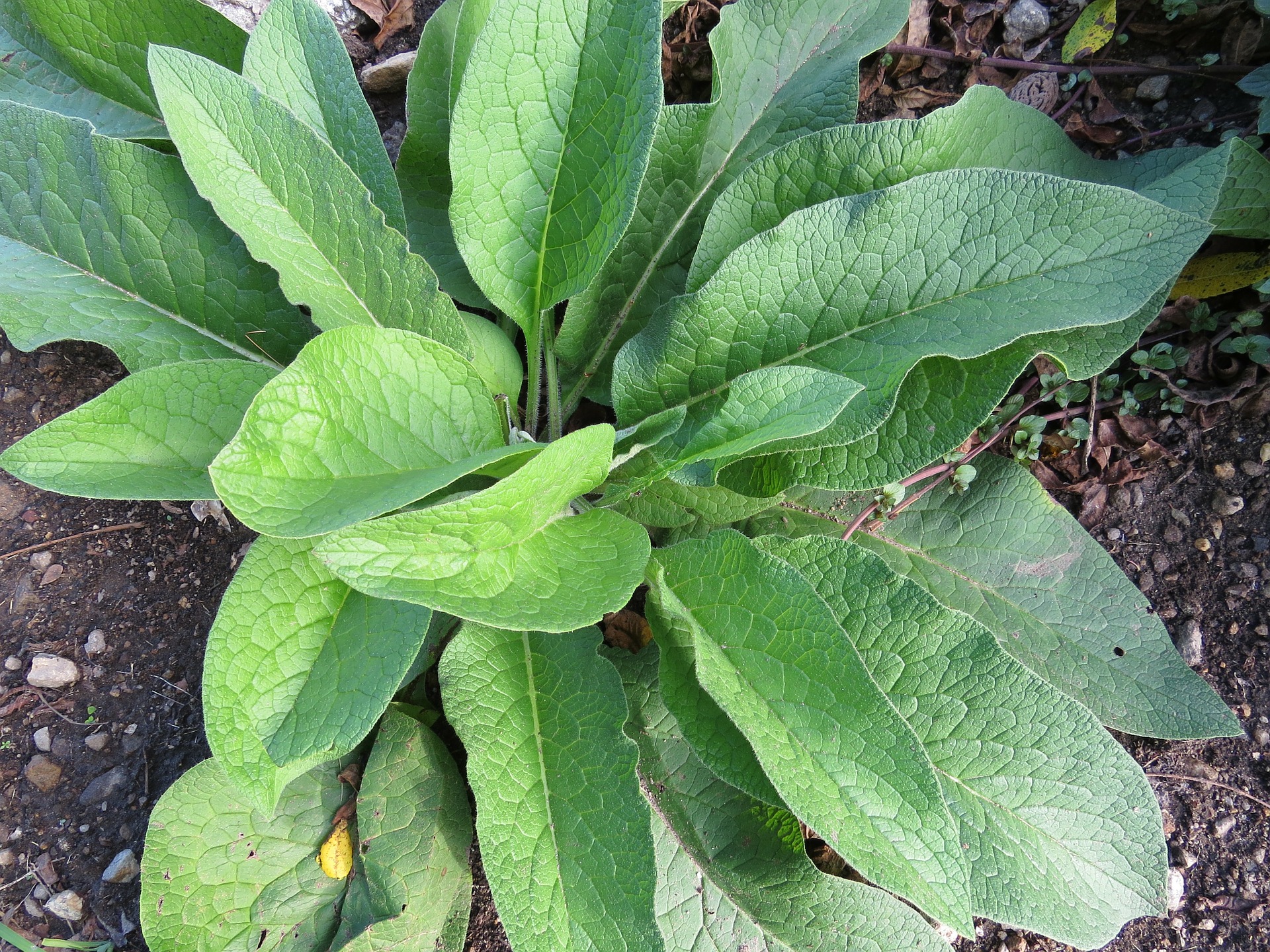
Comfrey does have some potential to harm the liver and must be used with care. However… the benefits of comfrey can definitely outweigh the risks.
Preparation for external use
The roots of leaves of the comfrey plant contain allantoin – which can boost the growth of new skin cells. They also contain rosmarinic acid – which help relive pain and inflammation.
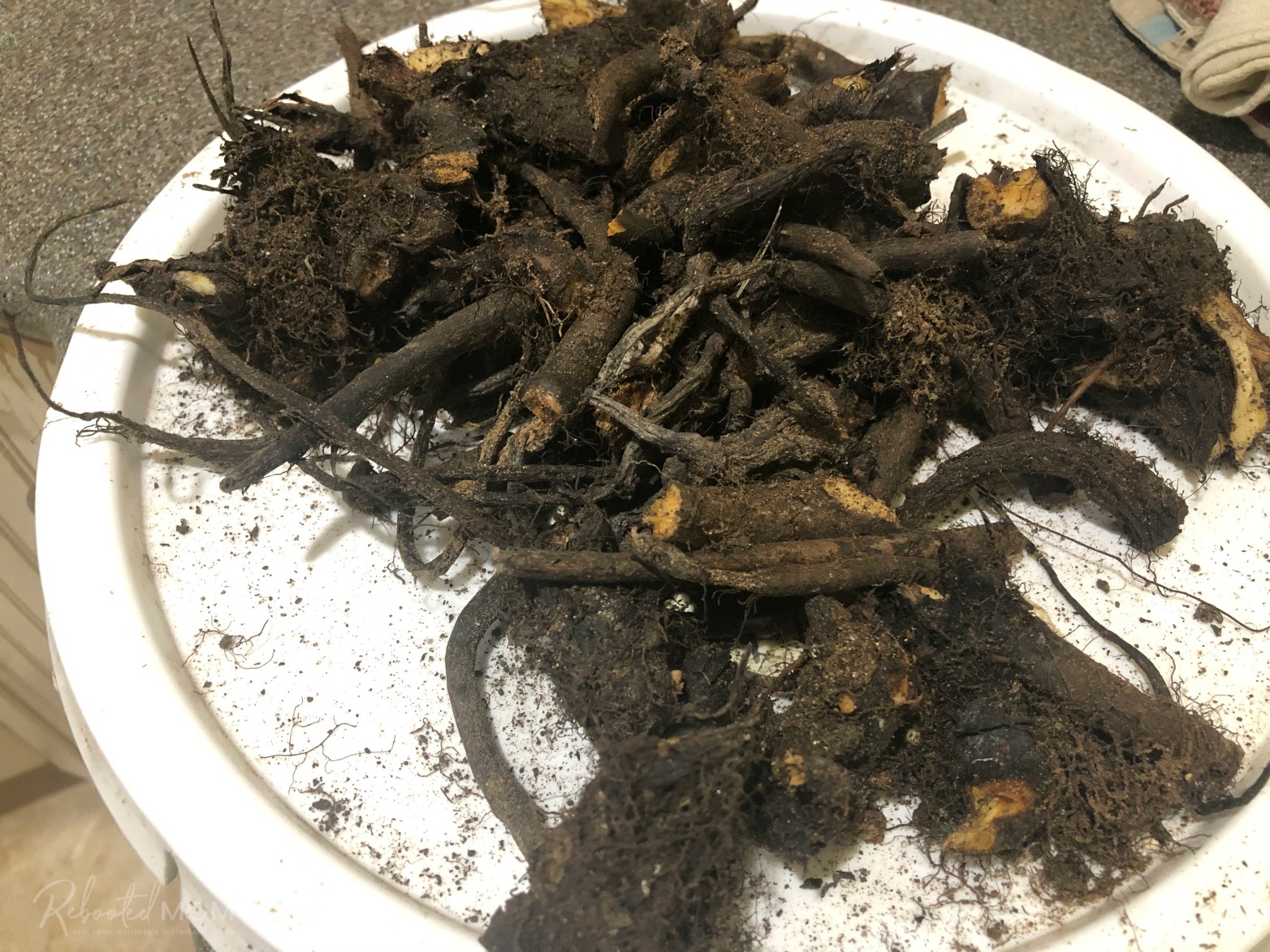
How to Dehydrate Comfrey Root
Comfrey root can be chopped, washed and dehydrated to be infused in oil for making salves for skin. The plant energy of comfrey is in the roots during the late fall/winter months – which makes this time the best for harvesting roots.
If using leaves, the optimal time for gathering is the spring.
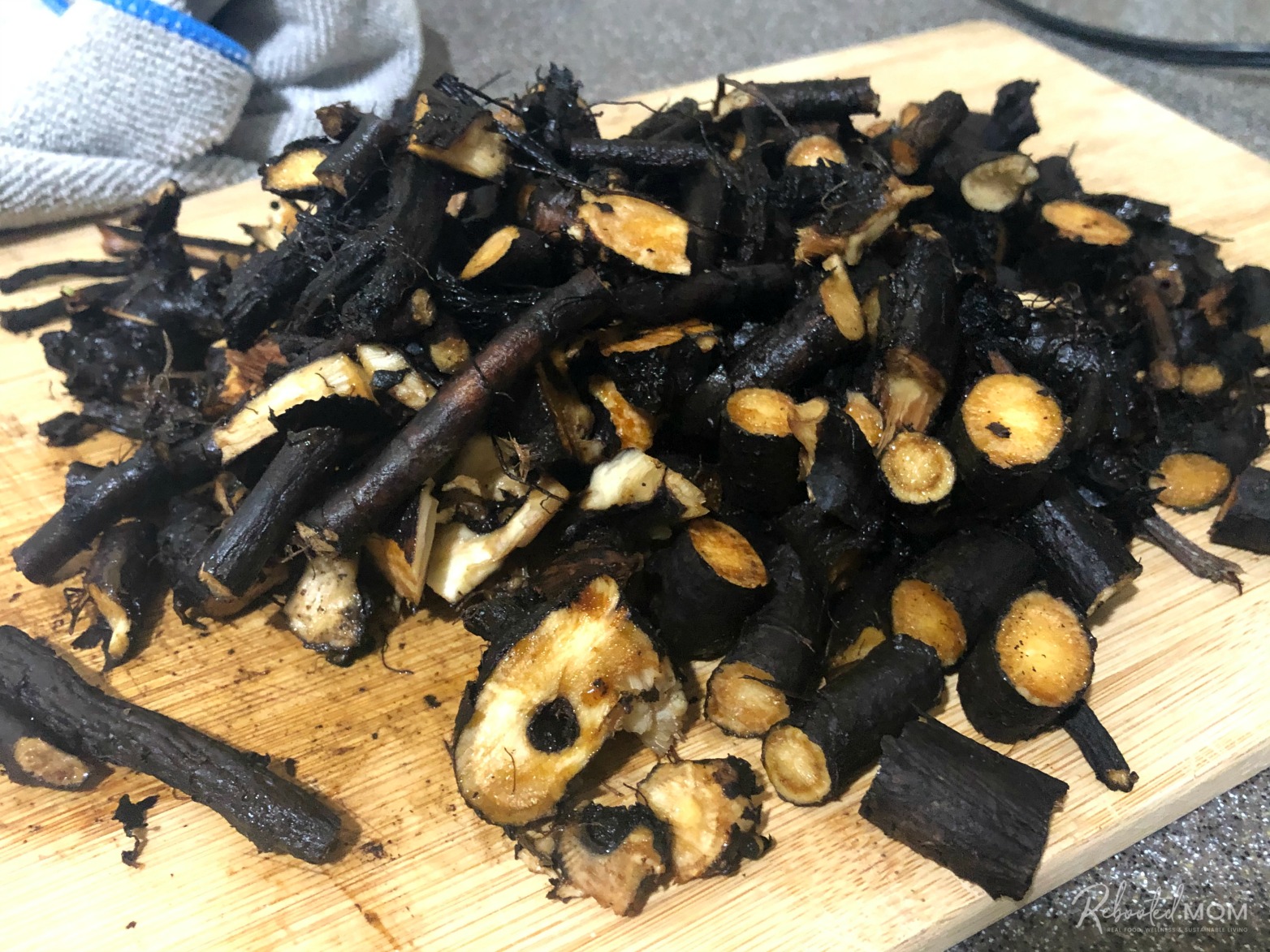
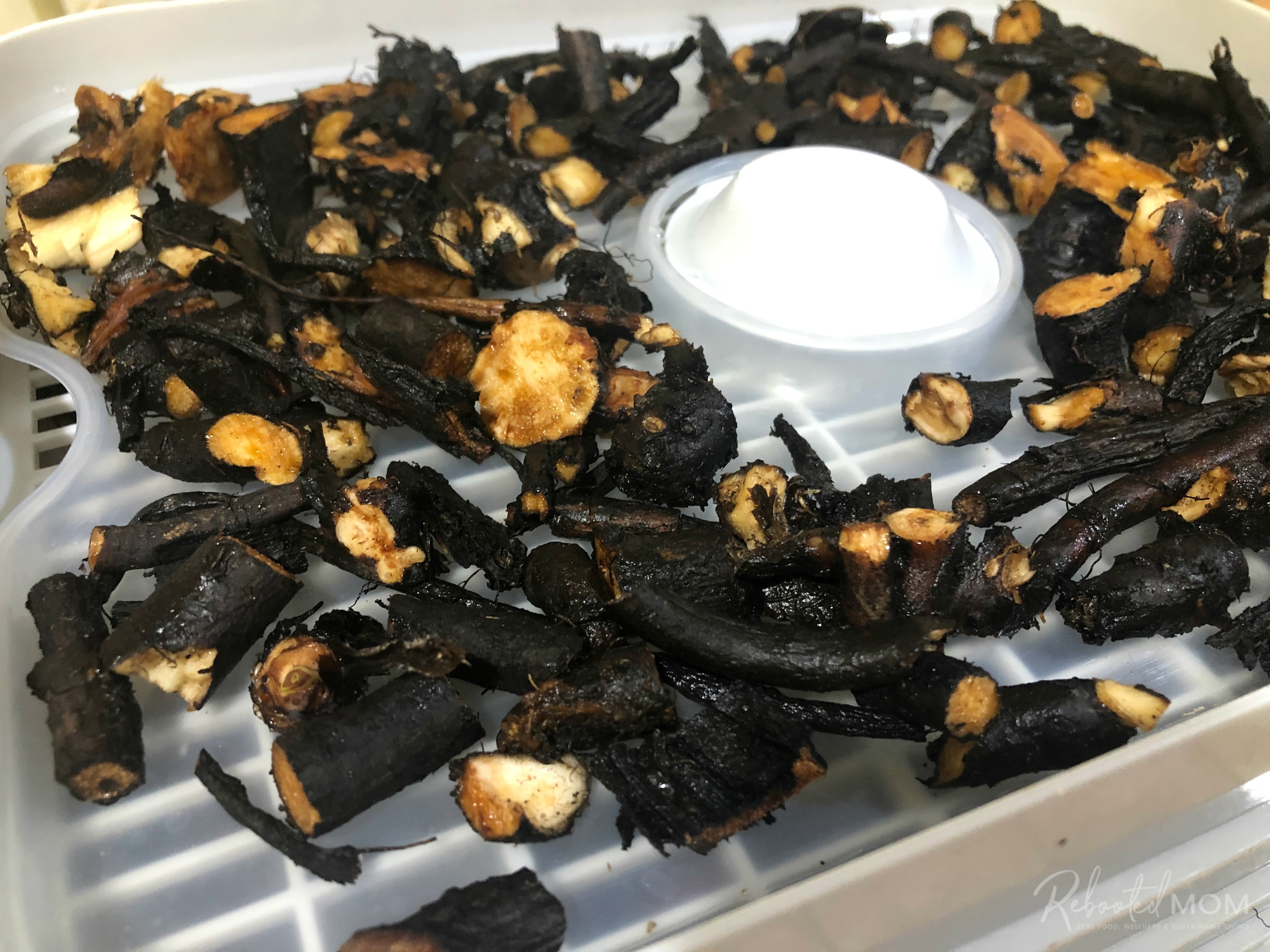
If you are harvesting roots, it’s best to separate them in a pile, then give them a good wash with the garden hose or in the kitchen sink. Once they are washed well, chop them into smaller pieces and lay them on your dehydrator trays.
Give them ample space for proper airflow. Smaller pieces are much quicker to dehydrate than larger pieces, with time averaging 5-8 hours at 130-140 degrees F. Once the roots are dry, you can cover with olive oil for oil infusions. If you are using the sun for a solar infusion, place a brown paper bag over the sealed jar and allow that to sit for 8-10 weeks.
You can also use your crock pot to infuse dehydrated comfrey root in oil. Place the dehydrated comfrey root in a glass pint jar, cover with olive oil and tightly cap. Set that jar in your crock pot, and add water to the crock pot (at least half full). Place the lid on the crock pot and set the pot on low for 5 hour periods over the course of 2-3 days.
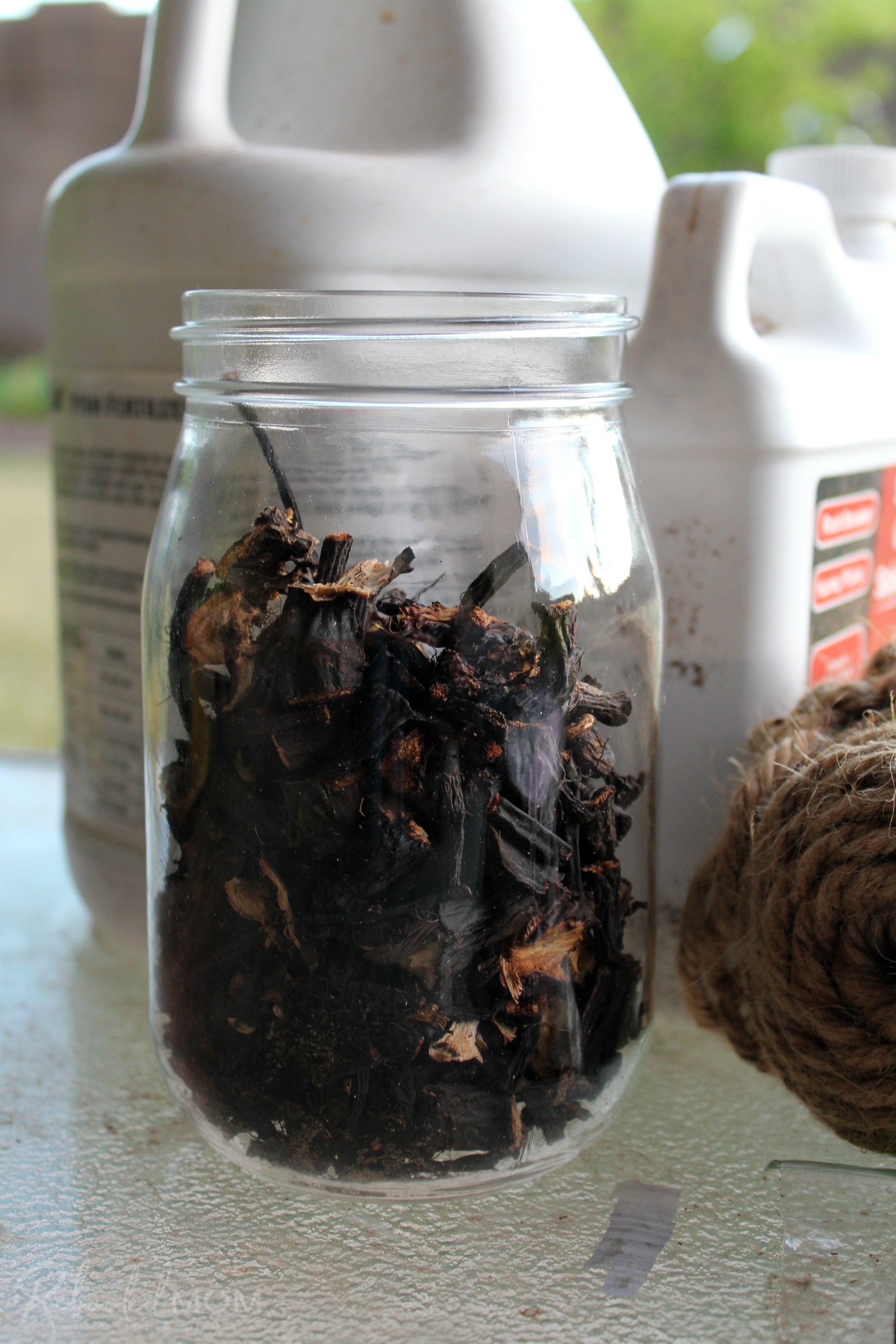
A note about herbal safety
As mentioned before, there has been some valid concern with comfrey in terms of the potential to do harm. There has definitely been a rise in fear in the use of popular herbs and the treatment of medical conditions. There definitely is a large amount of misinformation about herbal medicine online. That misinformation can scare the public into thinking that medicinal herbs are not advantageous for the public.
There are also those who prey on your fear in efforts to make money from the public in other areas.
I always like to try to remember that herbs can never be patented and as a result, they are (and always will be) the people’s medicine. It’s important, though, to use them safely and effectively.
Have you ever dehydrated comfrey root to use in salves or creams for use topically on skin?

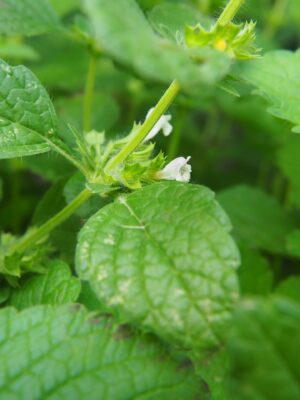

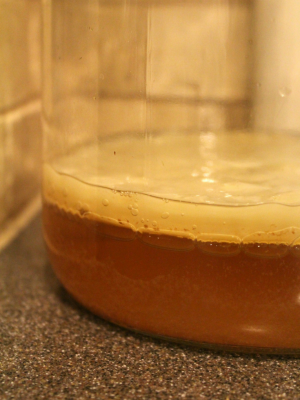
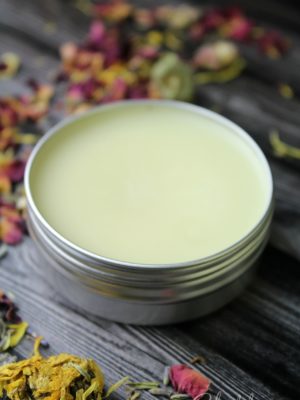
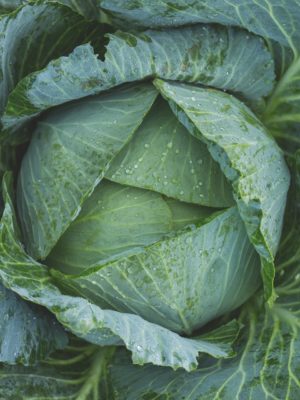

After we dry comfrey roots, how can we store them?
Love the information you offer.
Hi Tony. Store the comfrey roots in a jar in your pantry.. I top off with olive oil and infuse for making salve. If you don’t want to store them covered in olive oil, just keep them in a dry place away from moisture.
Hi, I don’t have a dehydrator, can I dry them in an oven? And what temp and how long for please?
Many thanks Sarah
You can – go with 200 degrees F (as that is the lowest most ovens will go). I haven’t used the oven but I’d suggest starting with a few hours at a time and checking to see how they are coming along. I would dry them for 2 hours in the oven, then check on them. If they are not yet dry, move forward at hour intervals, checking every hour.
Hello, Great information!! I bought already dehydrated roots. Can I still place the roots with other herbs in the window seal for a salve? Thank you!
Yes! You sure can 🙂
Hi. I’m wondering ratio of root to carrier oil. Also, leaves to oil. I’ve been making salve with dehydrated leaves, I now have some root that broke while dividing the plant. A friend has warned on liver damage of strength of concoction. Thanks. I can’t find a good ratio amount.
Hi Kathleen. There is a great risk in taking comfrey by mouth — so please, avoid doing so, as that can cause severe liver damage.
Used topically, you should use it sparingly, and for no more than 10 days at a time. I would try to limit the use of comfrey cream/salve to no more than 6 weeks per year, overall.
As for infusions — when I use dry comfrey, I infuse at a ratio of 1:5 (1 part comfrey to 5 parts oil). You can dehydrate the roots and infuse those too (I’ve done this!) – or, if you have enough leaves, then refrigerate the roots and give to friends (or sell to those who may want to grow comfrey themselves). Those broken roots will grow well… just bury, water adequately and wait patiently. If you can’t use all of the roots, then use a bubble envelope (cheap at the dollar tree or, if you have a mailing envelope with bubble padding around the house), keep in the door of your fridge until you are ready to plant or sell. I hope that helps!
Can I just air dry the root. I am also wondering is it possible to get them too dry in a dehydrator so that it is hard for the oil to infuse their benefits?
You can definitely use the dehydrator – you’ll want to go 5-8 hours at a temp of 130-135 degrees F. Dehydrating the root will still infuse the oil with benefits… getting rid of all of the moisture will actually be a benefit for the oil you are infusing because it won’t go rancid as fast (if there is moisture of any kind in the root then that moisture will get into the oil and affect the shelf life of the infused oil). I hope that helps!
How do you dry the comfrey root without a dehydrator or oven?
Hi there – you can dry them in a warm, dry area away from sunlight.
Hi, I’ve had dried root in oil in a jar in the crock pot for three days now. The dried roots are still rock hard. Should they soften up in the oil? It’s only on warm.
Patti – the dried roots won’t soften up. I’m guessing you are infusing the dried root into the oil – am I right? I did the same thing last year. You want to keep it on warm, that’s what I did too. You can keep the roots chopped small (which I did), or, if you feel like it’s not infusing well enough, you can macerate the roots and then add back to the jar with oil.
I didn’t want to macerate mine, I just cut the roots as small as I could, and then dehydrated the roots in the dehydrator, then added to a jar and topped with oil. I let half of my jars infuse in the sun (here in the Southwest we have a ton of sun!) and the other half in the crock pot. Then once I felt like the oil had infused enough (dark in color) I strained the roots out and stored the infused oil in the pantry so I could use the infused oil to make salve and soap later on.